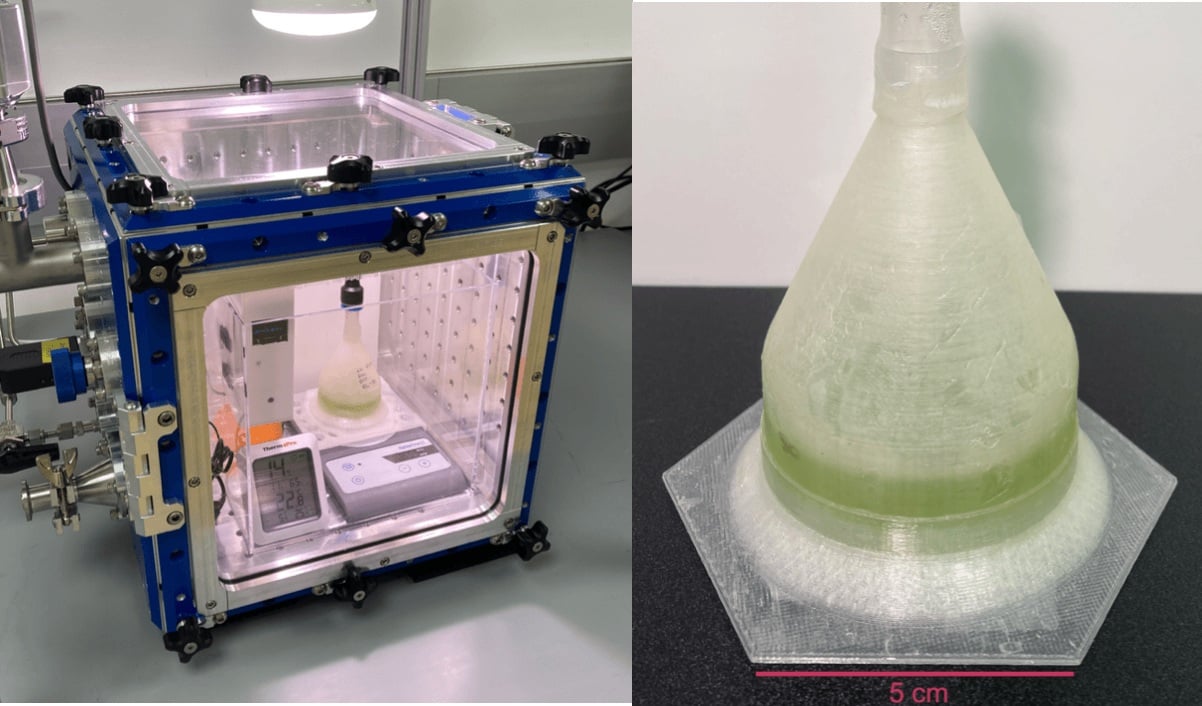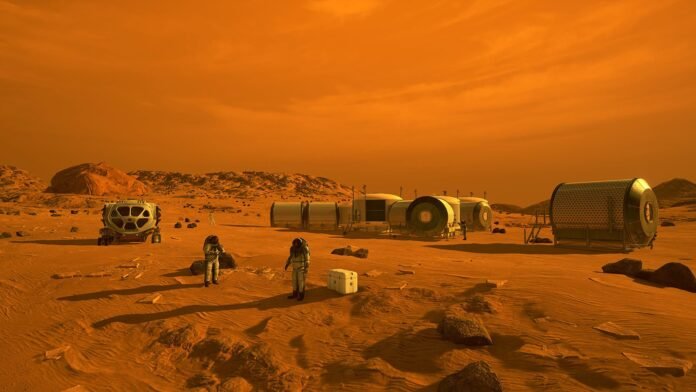If humanity intends to live and work beyond Earth, we need solutions for living sustainably in inhospitable environments. Even Mars, the most hospitable planet in the Solar System beyond Earth, is hostile to life as we know it. These include extreme temperature variations, a thin, unbreathable atmosphere, toxic soil, and higher-than-normal levels of solar and cosmic radiation. Given the distance between Earth and Mars and the time it takes to send missions there (6 to 9 months using conventional propulsion), these habitats must be closed-loop, self-sustaining environments that provide crews with food, water, and breathable air.
Last, but certainly not least, there’s the problem of launching the necessary equipment, machinery, and building materials to the Moon, Mars, and other locations beyond Earth. Given the sheer mass of these payloads, launching them from Earth is neither practical nor cost-effective. This means resources must be harvested in situ to provide the necessary resources and building materials – aka. in-situ resource utilization (ISRU). In a recent paper, an international team led by Harvard Professor Robin Wordsworth showed how these challenges can be addressed with green algae grown inside habitats made of bioplastics.
The study was led by Robin Wordsworth, Gordon McKay Professor of Environmental Science and Engineering and a Professor of Earth and Planetary Sciences at Harvard University. He was joined by researchers from the Harvard School of Engineering and Applied Sciences (SEAS), Harvard Medical School, the Harvard & Smithsonian Center for Astrophysics (CfA), the School of Physics and Astronomy at the University of Edinburgh, and the Boston-based biomanufacturing company Circe.
For decades, NASA and other space agencies have investigated ways to leverage Martian and lunar resources to create building materials and finished structures. Many of these proposals have been mechanical in nature, combining 3D printing techniques with bonding elements and polymers or sintering to turn regolith into concrete or molten ceramics. Other concepts seek to utilize biological processes to grow habitats in extraterrestrial environments, often relying on mycelia or other strains of fungi and lichens. The concept proposed by Wordsworth and his colleagues leverages another biomanufacturing process that relies on algae to turn CO2 into bioplastics.
 The 3D printer and the printed bioplastic in the Harvard team’s experiment. Credit: Wordsworth, et al. (2025)
The 3D printer and the printed bioplastic in the Harvard team’s experiment. Credit: Wordsworth, et al. (2025)
For their experiment, the team 3D-printed a growth chamber made from bioplastic (polylactic acid). This chamber was filled with algae and placed in a carbon dioxide-rich environment similar to Mars. While the simulated environment had an atmospheric pressure of just 600 pascals (about 1% of Earth’s atmosphere), pressure levels within the chamber were high enough for water to exist in a stable form. The bioplastic blocked harmful UV radiation while admitting enough light so photosynthesis could occur with the algae. This allowed the algae to grow and produce more polylactic acid, thereby growing the structure.
The concept replaces industrial processes and materials that are costly to manufacture and recycle with biomimicry, imitating how autotrophs grow naturally on Earth, using just carbon dioxide and water. As Wordsworth explained in a Harvard SEAS press release, their experiments are a first step toward the creation of habitats that do not require materials sent from Earth:
If you have a habitat composed of bioplastic, and it grows algae within it, that algae could produce more bioplastic. So you start to have a closed-loop system that can sustain itself and even grow through time. The concept of biomaterial habitats is fundamentally interesting and can support humans living in space. As this type of technology develops, it’s going to have spinoff benefits for sustainability technology here on Earth as well.
In previous experiments, Wordsworth and his team demonstrated how sheets of silica aerogels could be used to conduct terraforming on a local scale. Also known as “paraterafforming,” this method addresses both temperature and pressure issues by triggering a greenhouse effect that allows algae to grow more prolifically. Much like their experiment with bioplastics and algae growth, this method could be a pathway towards establishing a human presence beyond Earth.
The next step, said Wordsworth, is to demonstrate that their habitats also work in the vacuum conditions present on the Moon. The team also hopes to design a closed-loop production system to produce additional habitats. The Leverhulme Center for Life supported the research through the University grant, the Harvard Origins of Life Grant, and the National Science Foundation.
Further Reading: Harvard SEAS, Science Advances


